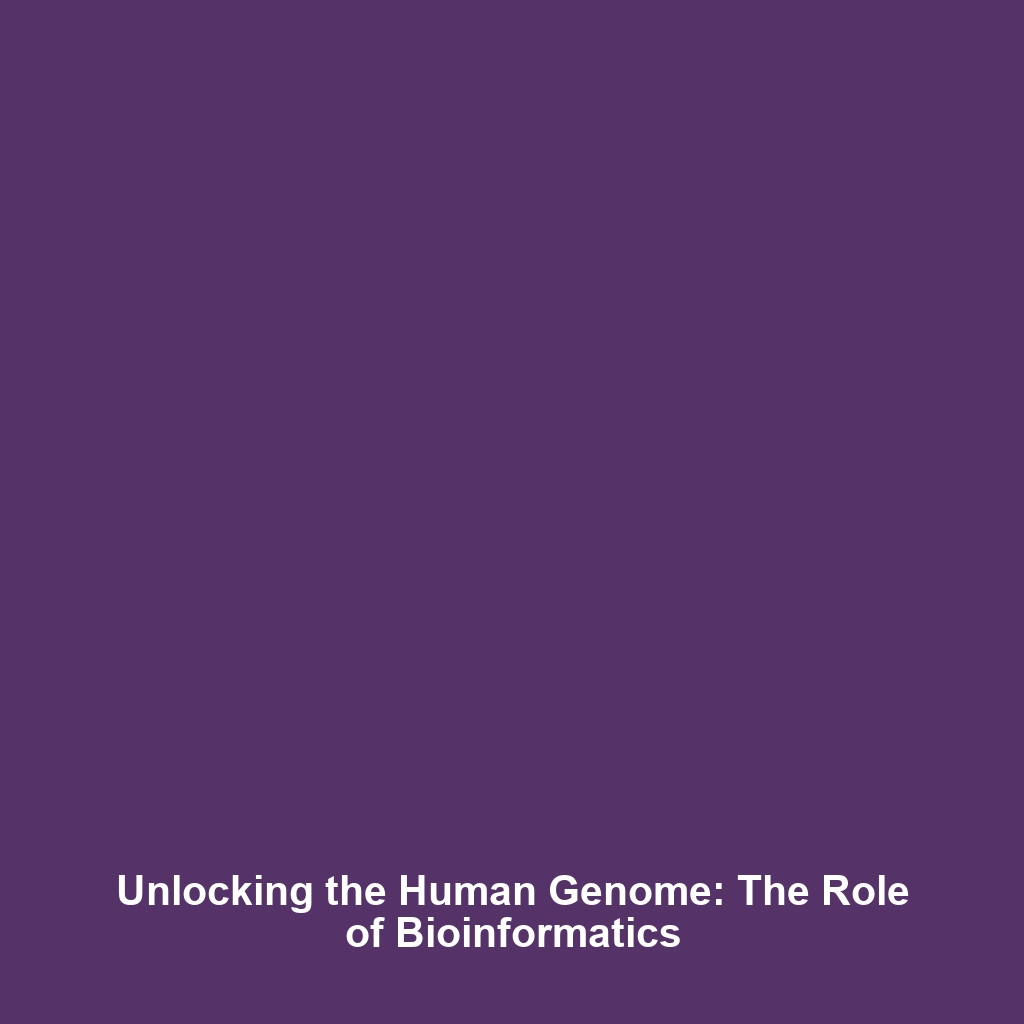Bioinformatics and Its Role in the Human Genome Project
Introduction
Bioinformatics is a multidisciplinary field that merges biology, computer science, and information technology to analyze and interpret biological data. As the Human Genome Project (HGP) aimed to map the entire human genome, bioinformatics played a pivotal role in sequencing, data analysis, and interpretation of genomic information. The significance of bioinformatics in the HGP can be attributed to its ability to manage the vast amounts of data generated, enabling researchers to make meaningful biological inferences from genetic sequences. This article will delve into the core principles, applications, challenges, and future directions of bioinformatics within the context of the HGP.
Key Concepts
What is Bioinformatics?
Bioinformatics encompasses a variety of concepts and techniques, including:
- Data Mining: Extracting useful information from large datasets.
- Genomic Sequencing: Determining the sequence of nucleotides in a DNA molecule.
- Protein Structure Prediction: Predicting the 3D structure of proteins based on their amino acid sequences.
- Comparative Genomics: Analyzing the similarities and differences in the genomic features of different organisms.
Bioinformatics in the Human Genome Project
The HGP utilized bioinformatics to manage the complexities of sequencing the human genome. By developing algorithms and software tools, bioinformaticians were crucial in storing, analyzing, and visualizing the extensive data that emerged from the project.
Applications and Real-World Uses
The applications of bioinformatics are vast and impactful, particularly in the context of the Human Genome Project:
- Personalized Medicine: Bioinformatics enables the customization of medical treatment based on individual genetic profiles.
- Genetic Disease Research: Understanding the genetic basis of diseases by analyzing genomic data.
- Drug Discovery: Identifying potential drug targets through genomic and proteomic data analysis.
These examples demonstrate how bioinformatics is employed in numerous facets of healthcare and research, underscoring its importance in the ongoing legacy of the Human Genome Project.
Current Challenges
Despite its advancements, bioinformatics faces several challenges:
- Data Overload: The volume of genomic data generated can overwhelm existing storage and processing capabilities.
- Interoperability: Lack of standards in data formats hinders effective data sharing and collaboration among researchers.
- Analytical Complexity: Developing accurate and predictive models for biological data analysis remains a significant hurdle.
Future Research and Innovations
The future of bioinformatics promises exciting innovations:
- Artificial Intelligence: Integrating AI and machine learning techniques to enhance analysis and prediction models.
- Next-Generation Sequencing: Advancements in sequencing technologies will continue to lower costs and increase accessibility.
- Multi-Omics Approaches: Combining genomics, proteomics, and metabolomics data for a comprehensive understanding of biological systems.
Conclusion
In summary, bioinformatics is integral to the success and impact of the Human Genome Project. Its applications extend into numerous fields, paving the way for advancements in personalized medicine and genetic research. As we move forward, addressing current challenges and embracing future innovations will be crucial for continued progress in this field. For further reading on related topics, explore our articles on Genomics and Proteomics.
